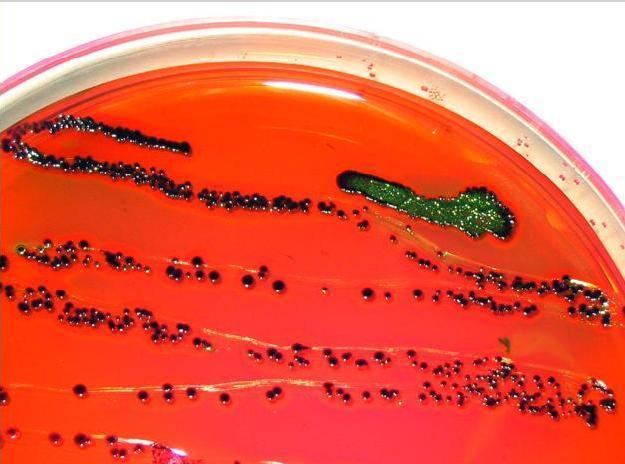 | ||
Eosin methylene blue (EMB, also known as "Levine's formulation") is a selective stain for gram-negative bacteria. EMB contains dyes that are toxic to gram-positive bacteria. EMB is the selective and differential medium for coliforms. It is a blend of two stains, eosin and methylene blue in the ratio of 6:1. A common application of this stain is in the preparation of EMB agar, a differential microbiological medium, which slightly inhibits the growth of Gram-positive bacteria and provides a color indicator distinguishing between organisms that ferment lactose (e.g., E. coli) and those that do not (e.g., Salmonella, Shigella). Organisms that ferment lactose display "nucleated colonies"—colonies with dark centers.
This medium is important in medical laboratories by distinguishing pathogenic microbes in a short period of time.
On EMB if E. coli is grown it will give a distinctive metallic green sheen (due to the metachromatic properties of the dyes, E. coli movement using flagella, and strong acid end-products of fermentation). Some species of Citrobacter and Enterobacter will also react this way to EMB. This medium has been specifically designed to discourage the growth of gram positive bacteria.
EMB contains the following ingredients: peptone, lactose, dipotassium phosphate, eosin Y (dye), methylene blue (dye), and agar.
There are also EMB agars that do not contain lactose.
